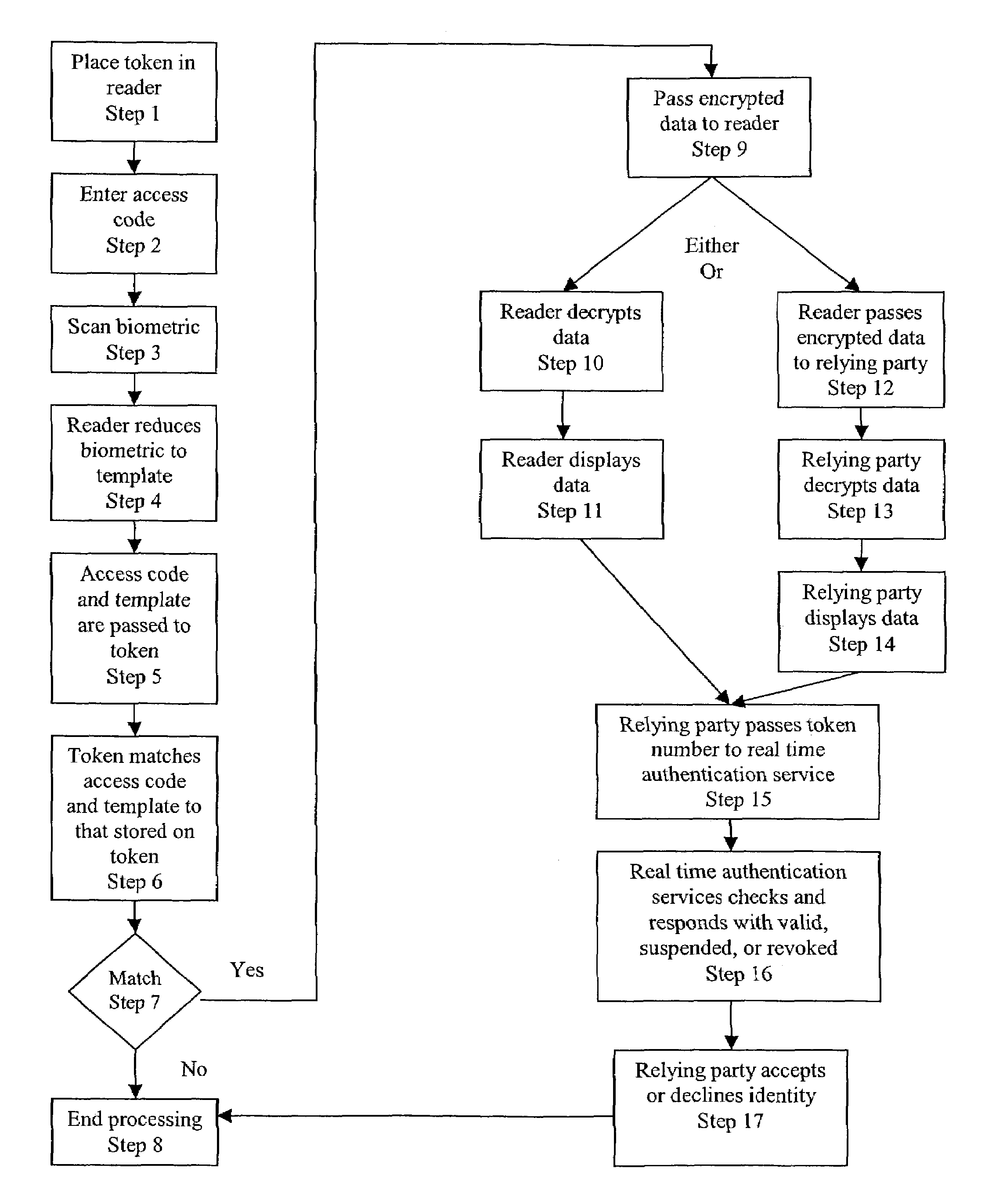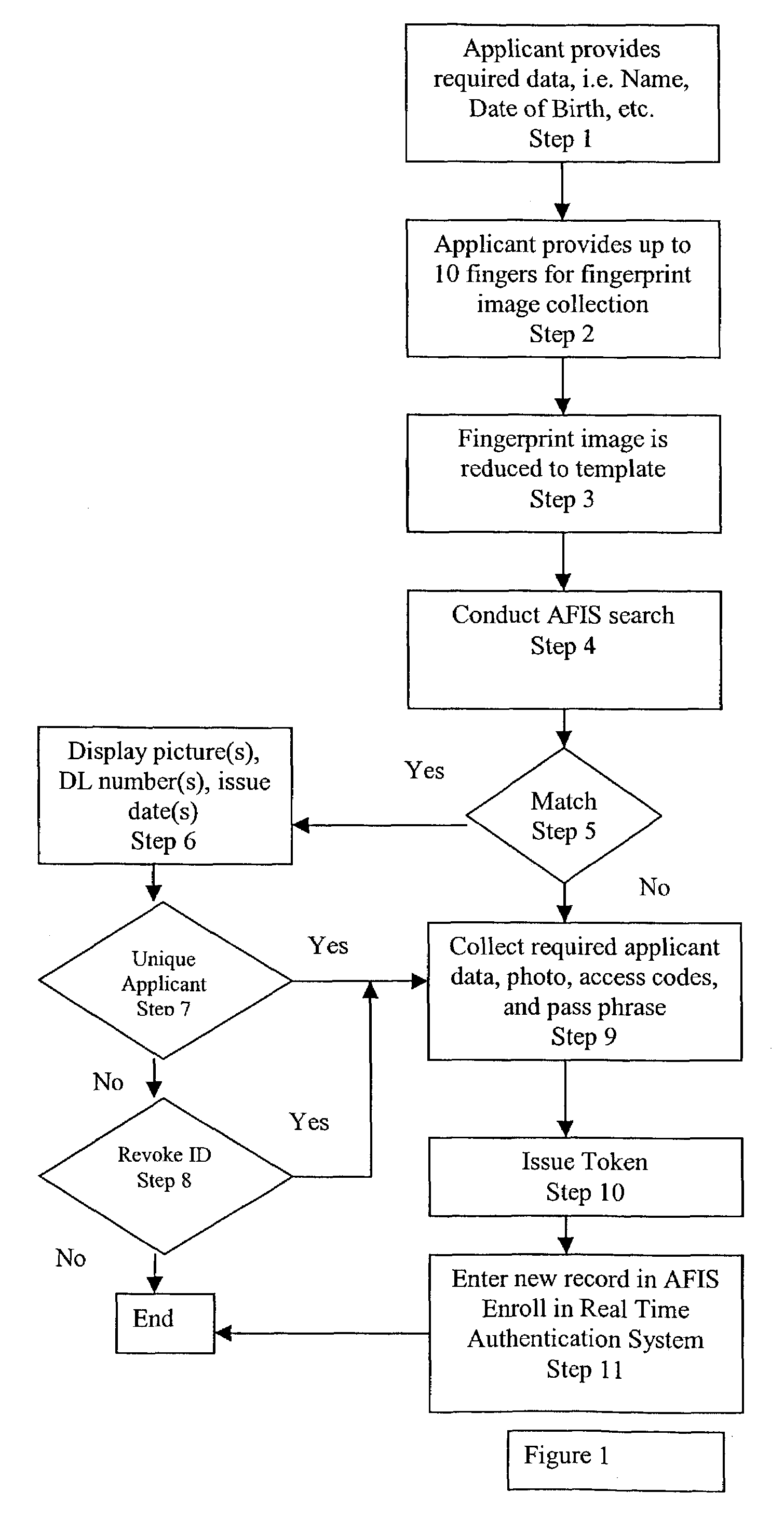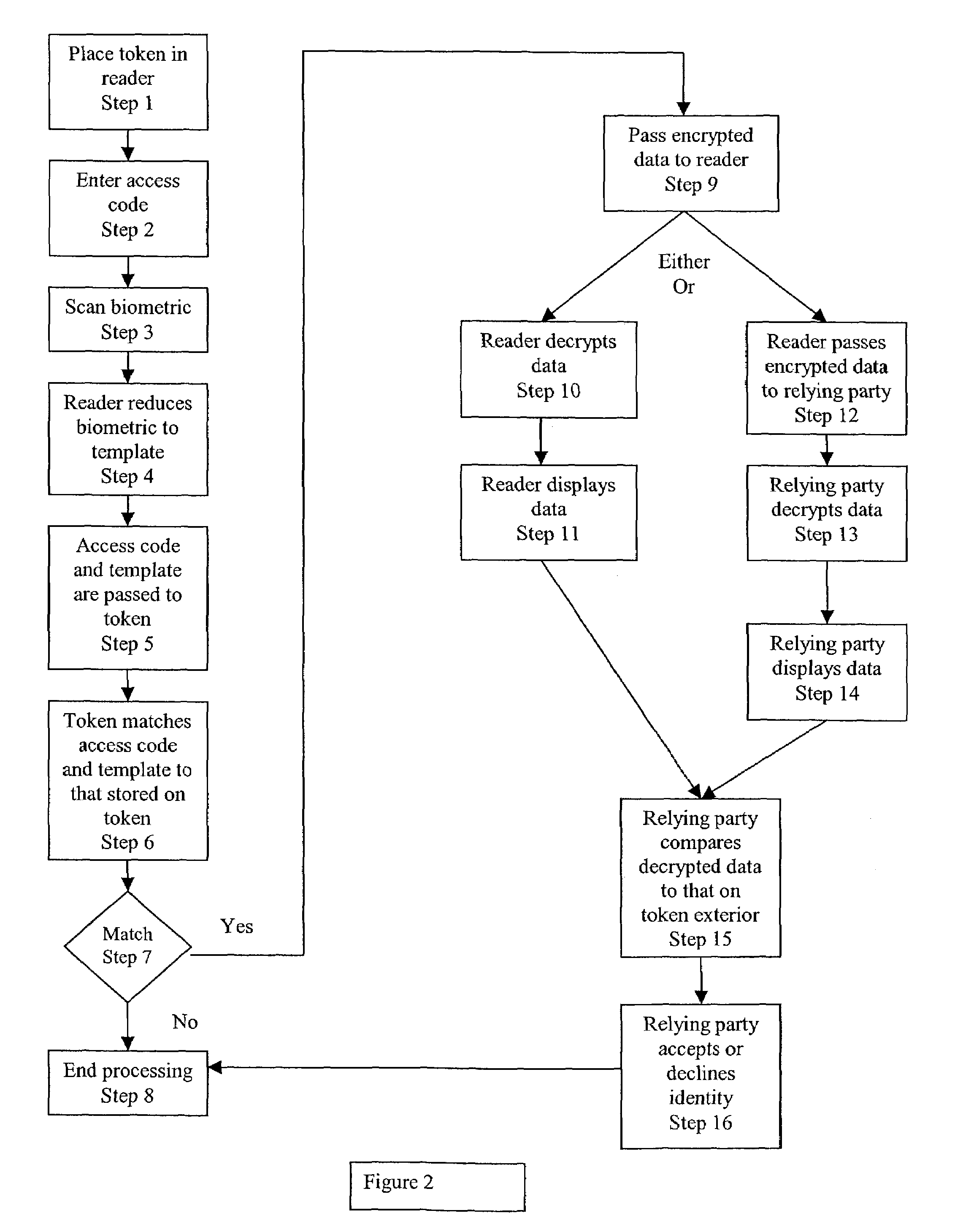Method and system for the generation, management, and use of a unique personal identification token for in person and electronic identification and authentication
- Summary
- Abstract
- Description
- Claims
- Application Information
AI Technical Summary
Benefits of technology
Problems solved by technology
Method used
Image
Examples
Embodiment Construction
[0022]This Unique Personal Identification Token will be issued in cooperation with a government agency, most commonly a state motor vehicle administration consistent with the requirements of this invention and in accordance with existing standards. The Unique Personal Identification Token will be available to provide holder identification and authentication for any government, commercial, and personal use where unique identification and authentication is desired.
[0023]This Unique Personal Identification Token will utilize biometrics to assure that only one token is issued to each holder. Each applicant for a Unique Personal Identification Token will be required to present one, or more biometric to be searched against a database of biometrics associated with every Unique Personal Identification Token issued in the past. If a match is found, the issuing government agency shall make a determination that the applicant is a holder of a previously issued Unique Personal Identification Tok...
PUM
 Login to View More
Login to View More Abstract
Description
Claims
Application Information
 Login to View More
Login to View More - R&D
- Intellectual Property
- Life Sciences
- Materials
- Tech Scout
- Unparalleled Data Quality
- Higher Quality Content
- 60% Fewer Hallucinations
Browse by: Latest US Patents, China's latest patents, Technical Efficacy Thesaurus, Application Domain, Technology Topic, Popular Technical Reports.
© 2025 PatSnap. All rights reserved.Legal|Privacy policy|Modern Slavery Act Transparency Statement|Sitemap|About US| Contact US: help@patsnap.com



